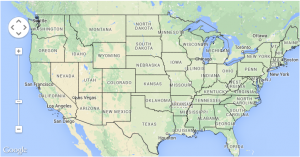The A B C’s Of Medicare
WHEN YOU REACH 65, YOU face the most important decision of your medical life: You are now eligible for Medicare.
 The conception that Medicare is free is just not the case, Medicare is not free, and it’s important to understand the ins and outs of Medicare before you sign up. Making the wrong choices can be expensive.
The conception that Medicare is free is just not the case, Medicare is not free, and it’s important to understand the ins and outs of Medicare before you sign up. Making the wrong choices can be expensive.
Even if you’ve been on Medicare for years, you may want to re-evaluate your options annually to make sure you’ve got the right plan. The annual open enrollment period, during which you can switch Medicare plans, runs Oct. 15 through Dec. 7.
“I think everyone should consider switching,” says Lita Epstein, author of “The Complete Idiot’s Guide to Social Security and Medicare.” “Plans change, benefits change and the premiums change.”
It’s especially important to re-evaluate your options if you have a Medicare Part D drug plan or a Medicare Advantage plan because those plans can change significantly from year to year, dropping and adding drugs and doctors or changing co-pays or deductibles. “Even if you’re completely happy with your plan, you have to look because things change
Medicare plans are actually broken into multiple parts:
- Part A covers hospital care, skilled nursing, hospice and some home health care. If you or your spouse has at least 10 years of Social Security work history, this part is free. If you don’t have that work history, it can cost up to $413 per month. Your premium amount is determined by how many Social Security work credits you have.
- Part B covers doctor visits, preventive care, outpatient care and hospitals, and some home health care. In 2018, this part will average $134 a month for most Medicare beneficiaries whose incomes are $85,000 a year or less ($170,000 for a couple) and up to $428.60 for those whose annual income exceeds $214,000 ($428,000 for a couple). Most people find they need a Medigap plan in addition to parts A and B.
- Part C is also known as a Medicare Advantage plan. These are Medicare health plans offered by private companies that contract with Medicare to provide you with all your Part A and Part B benefits. Many plans also offer Part D drug coverage. Premiums range by region and plan, but the nationwide average for a Medicare Advantage plan in 2018 will be $30, down 6 percent from 2017.
- Part D covers prescription drugs. Premiums in 2018 will average $33.50, down from $34.70 this year.
The first big decision Medicare beneficiaries must make is whether to go with traditional Medicare (parts A, B with many people also adding drug coverage with Part D and supplemental coverage with a Medigap plan) or a Medicare Advantage plan (Part C). Medicare Advantage plans can have low or no monthly premiums, but they usually require members to get their care only from network doctors and hospitals. Both options have deductibles, co-pays and coinsurance, where you pay a percentage of the bill. “They look at their lives, they look at their health, they look at their pocketbooks, and they chose the parts they want.
For More information, please contact Me.





